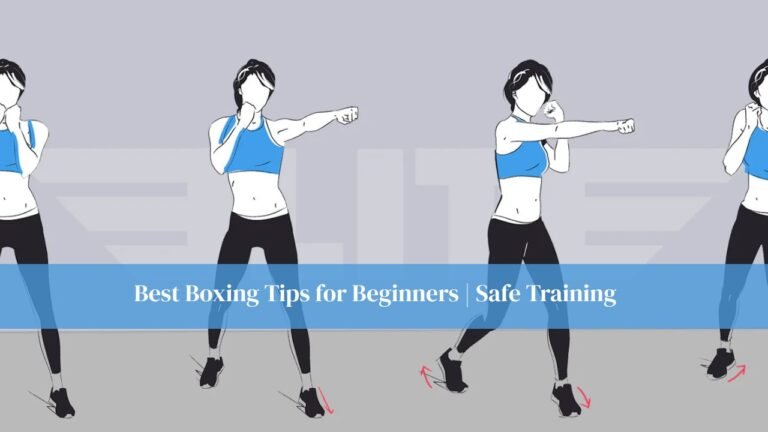Uppercuts in boxing are some of the most thrilling and devastating punches in a fighter’s repertoire. These powerful blows, thrown upwards from below, have the potential to change the course of a match in a split second. But the question that often arises is, are uppercuts legal in boxing?
What Are Uppercuts in Boxing?

Uppercuts in boxing are a fascinating and powerful technique used by fighters. To truly appreciate their significance, it’s essential to understand what they are and how they work. Uppercuts are a type of punch delivered in an upward motion, with the target often being the opponent’s chin or body.
What makes uppercuts distinctive is the mechanics behind them. To execute a proper uppercut, a boxer harnesses the force generated from their legs and hips. This explosive power, transferred through the body and into the fist, makes the uppercut a formidable and potentially fight-altering weapon in the ring.
Are Uppercuts Legal in Boxing?
The legality of uppercuts in boxing is a topic of interest and discussion among boxing enthusiasts and participants. To determine their legality, we need to look at the rules and regulations that govern the sport.
Boxing is a highly regulated sport, and it’s essential to recognize that these regulations may vary slightly among different boxing organizations. These rules play a crucial role in defining what is considered legal and what isn’t inside the boxing ring.
In general, boxing is a straightforward sport with clear guidelines, but when it comes to the legality of specific punches, things can become a bit more complex. Uppercuts, which involve punches thrown in an upward motion, have a particular set of rules governing their use. These rules are essential to maintain fairness and safety in the sport.
The Legality of Uppercuts

Uppercuts are a distinct and thrilling punch in the world of boxing, often capturing the imagination of fans and fighters alike. However, the legality of uppercuts is a crucial aspect of the sport, and it’s essential to understand how these punches fit into the framework of boxing regulations.
In essence, uppercuts are legal punches in the sport of boxing. Nevertheless, their legality is closely tied to the rules and regulations established by the governing bodies of the sport. Different boxing organizations may have their own specific guidelines regarding how and where uppercuts can be thrown. These rules are in place to maintain a fair and safe environment for all participants.
The regulations typically stipulate that uppercuts should primarily target specific areas, such as the opponent’s chin or body, while avoiding illegal areas like striking below the belt or engaging with a downed opponent. The precise application of these rules can vary between organizations, so boxers must be well-versed in the regulations specific to the event in which they are competing.
Controversies and Challenges in Boxing
In the realm of boxing, controversies and challenges often refer to incidents and situations that raise questions, disputes, or difficulties. They are particularly relevant when discussing the use of specific techniques or punches, such as uppercuts. These controversies may arise from disagreements over the application of rules, the legality of certain actions, or the interpretation of regulations within the sport.
Now, let’s add specific points related to Controversies and Challenges:
Controversial Incidents
Despite uppercuts being legal punches in boxing, there have been instances where fighters’ use of uppercuts has sparked controversy. These situations often involve questions about the legality of specific uppercuts or whether they violated the rules. The controversies can lead to disputes and discussions within the boxing community.
Penalties and Disqualifications
Controversial uppercut incidents sometimes result in fighters facing penalties, including point deductions, warnings, or even disqualification from a match. The severity of the penalties can vary, depending on the nature of the violation and the discretion of the referees and officials.
Debate and Disagreement:
The controversial use of uppercuts has led to debates and disagreements within the boxing community. These debates typically revolve around the appropriateness of the penalties or disqualifications and may touch on the subjective nature of rule interpretation.
Rule Interpretation Discrepancies
The challenges within the spo of boxing include disparities in interpreting and applying rules consistently. Different referees, judges, and boxing organizations may have slightly different interpretations of the rules governing uppercuts, which can lead to inconsistencies in the enforcement of these regulations.
Call for Clarity
To address the issue of inconsistent rule interpretation, there is a growing call for greater clarity and uniformity in the enforcement of rules related to uppercuts.
Ensuring Rule Consistency
The ultimate goal is to ensure consistent rule enforcement, particularly concerning uppercuts, to maintain the integrity of the sport. This entails a uniform application of rules to reduce potential confusion and disputes during matches and to promote fairness and safety within the ring.
Famous Uppercut Knockouts
- Iconic Moments: Throughout the rich history of boxing, there have been unforgettable moments where uppercuts led to spectacular and often jaw-dropping knockouts.
- Impact on the Sport: These iconic moments serve to emphasize the significance of uppercuts in the sport of boxing. They demonstrate the explosive power and effectiveness of this punching technique and contribute to the sport’s enduring legacy.
Uppercuts in Different Boxing Styles
- Style Variations: The utilization of uppercuts can vary significantly based on a boxer’s style. Brawlers, known for their aggressive approach, may use uppercuts to close the distance and deliver powerful hooks. In contrast, out-boxers, who prioritize defense and counterpunching, might use uppercuts strategically in response to their opponent’s movements.
- Adaptation to Style: Each boxing style brings a unique approach to how uppercuts are integrated into a fighter’s overall strategy. The ability to adapt and employ uppercuts effectively within the context of one’s style is a testament to a boxer’s versatility and skill.
Conclusion
In conclusion, uppercuts are legal in boxing, provided they adhere to the rules and regulations of the specific boxing organization in which the match takes place. These punches have a rich history and continue to be a vital part of a boxer’s toolkit. When executed correctly, uppercuts can be both thrilling and decisive, making them a true spectacle in the world of boxing.
FAQs
Are uppercuts only legal in professional boxing, or can amateurs use them as well?
Uppercuts are legal in both professional and amateur boxing, but the rules may vary slightly between the two categories.Can a boxer be disqualified for throwing illegal uppercuts?
If a boxer repeatedly throws illegal uppercuts, such as hitting below the belt or striking an opponent who’s down, the referee can penalize or disqualify them.What is the proper technique for throwing an uppercut?
The proper technique involves generating power from the legs and hips, keeping the elbow close to the body, and targeting the opponent’s chin or body.
Related Post:




